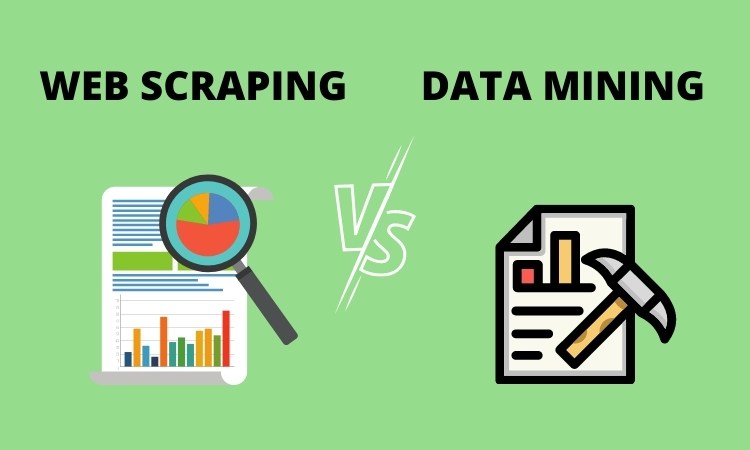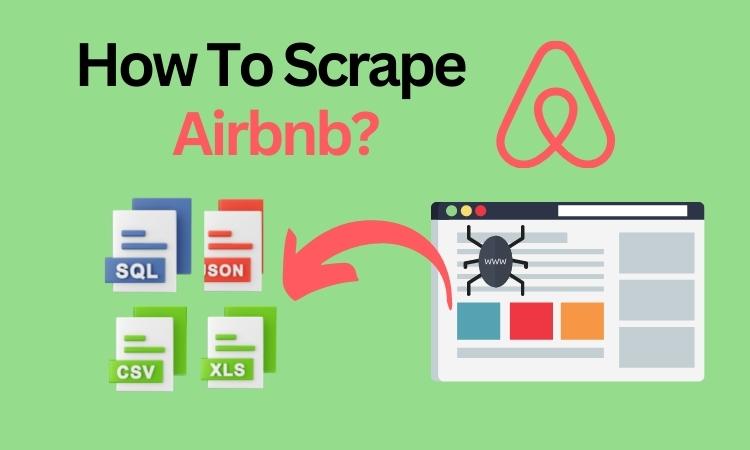Data Mining VS Web Scraping 2022? What are the Differences?
Data mining vs Web scraping is sometimes confused. Both of these terms are linked with extracting valuable information from data. However, they both have different definitions.
Data mining and Web scraping are sometimes confused. Both of these terms are linked with extracting valuable information from data. However, they both have different definitions.
In this article, we will explain what is the difference between data mining and data extraction. Also how web scraping supports data mining. Understanding the difference in both processes will make you realize how each of the processes makes business better individually.
What is Web Scraping?
Web scraping is the process of extracting data from a website. The data is converted into a readable format like an Excel sheet. Web scraping can be done manually. However, manual web scraping is very time-consuming. Picking up a website and writing down the required data from its content is web scraping. You can scrape all of the data available publicly on websites and social media.
Mostly the data is not available publicly on the front end of the website. Therefore web scraping automated tools are mostly preferred. They deliver the required data very efficiently and conveniently. It has three requirements i.e. target website, a scraping tool and a database for storing data.
How does Web Scraping work?
Automated web scraping tools analyze and extract data from the website’s HTML code. Some advanced scrapers also get into the Javascript and CSS of the websites. The tool duplicates the data. A good web scraping tool will replicate only the public data of the website for you. You can also instruct the tool to extract specific types of data. The data is extracted into an Excel sheet or CSV file.
Ethical and Legal Scraping
Web scraping is ethical and legal if you scrape publicly available data. You should still not use it for unintended purposes. Yes, scraping massive amounts of data can make websites unusable for others. The website owner can also think of it as a DDoS attack and block the IP address. So it is ethically wrong. One should not scrape Robot.txt content of the website, where website owners don’t allow data scraping.
Related: Is Web Scraping Legal in 2022? What Are the Legal Issues?
What is Data Mining?
Data Mining is the process of advanced analysis of the data sets. It lets you understand machine learning technologies. With data mining, you can get insights and information about specific trends from datasets. You will be able to discover something new from the data already extracted.
Data mining is focused on deriving information by analyzing raw data for anomalies. You can get this data from many sources. Like cookies, online surveys, public records or even web scraped data.
If you want a custom web scraping or data mining solution for market research, Alnusoft is currently offering Discounts.
<<Click here to get a free quote today>>
How Does Data Mining Work?
Data mining is right as long as you credit the source of the data. Data should be legal and credible. Getting data is just a step among the five steps of data mining. Mining the dataset for information is the actual data mining process.
You can extract the value from data by using an excel sheet. Or use mathematical models for extracting information using Python or SQL-like coding languages.
Related: Difference between Data Profiling and Data Mining
Is Data Mining Ethical and Legal?
Data mining is also legal if you use public data or data scraping is permissible by the site owner. The problem is more related to ethics. The data should not be used for discrimination based on gender, religion etc. It is essential to give credit to the source of your data.

Difference Between Data Mining VS Web Scraping
At this point, the difference would have been clear but let’s put it easily here.
Web scraping is the process of extracting data from various websites. This data is structured into a readable format like an excel sheet to build datasets. This process does not involve any data analysis or processing.
In data mining, the datasets are analyzed for valuable insights uncovering the trends. It does not involve any data extraction or gathering.
So Web scraping can be used to extract data and build datasets. These datasets are then analyzed in the process of data mining.
How Does Web Scraping Enable Data Mining?
The basic connection between Data Mining and Web scraping is the data supply. Web scraping will create rich data sets by collecting content and images from websites. Following are some data types that data scraping enables for data mining applications.
1. Commercial Data
A common use case of web scraping enabling data mining is the commercial data on e-commerce sites. Web scraping collects a product description, price, stock info, colors, reviews and ratings. It extracts detailed information for generating insights for new businesses.
Web scraping can also collect information like ticket prices, flight fares etc from various websites.
2. Blogs and news:
Natural language processing is a data mining method. It transforms text into valuable information. Web scraping is an efficient way of collecting data on the web. It can extract content, images and links embedded in a site. You can select a specific website. Or you can extract data from search engine results based on certain keywords.
3. Social media posts
In one second, Twitter has more than 8000 tweets and Instagram has more than 1000 posts on average. Depending on the business, this public content can be relevant. You can also target and scrape business-related keywords and hashtags. It will give you an insight into what people have to say online. It can be reviews about the products, emerging trends and activity of competitors on social media.
Conclusion
Data mining vs Web scraping are not synonyms. They are two different processes. Web scraping is just a way of collecting data. Data mining analyzes the data to derive more value. This means you can first use web scraping for extracting data. Then use data mining for analyzing the extracted data.







